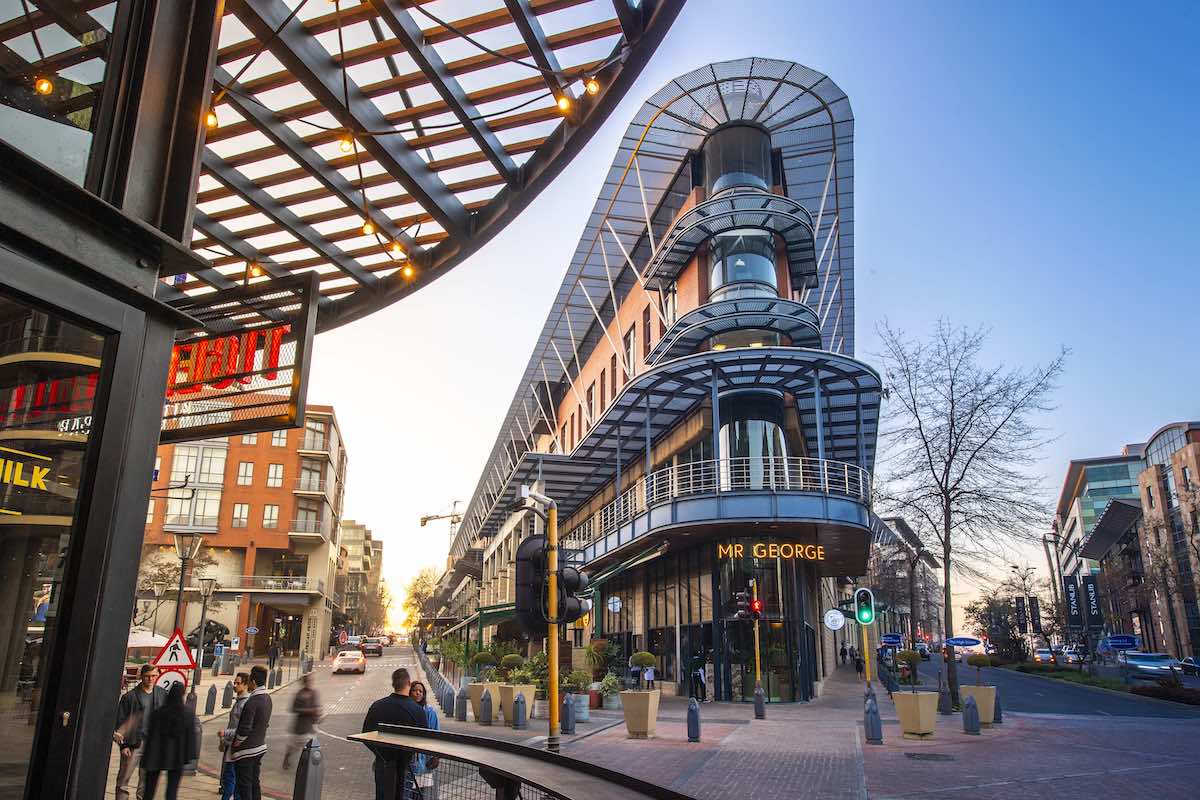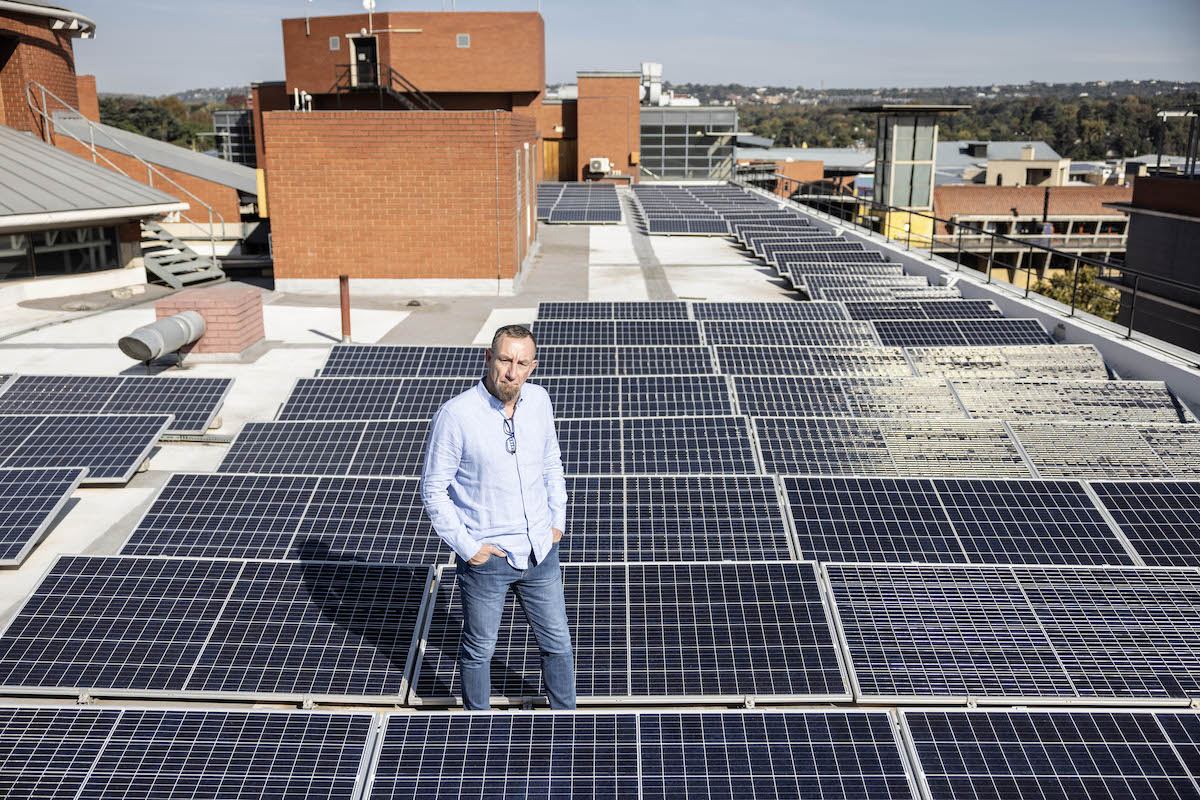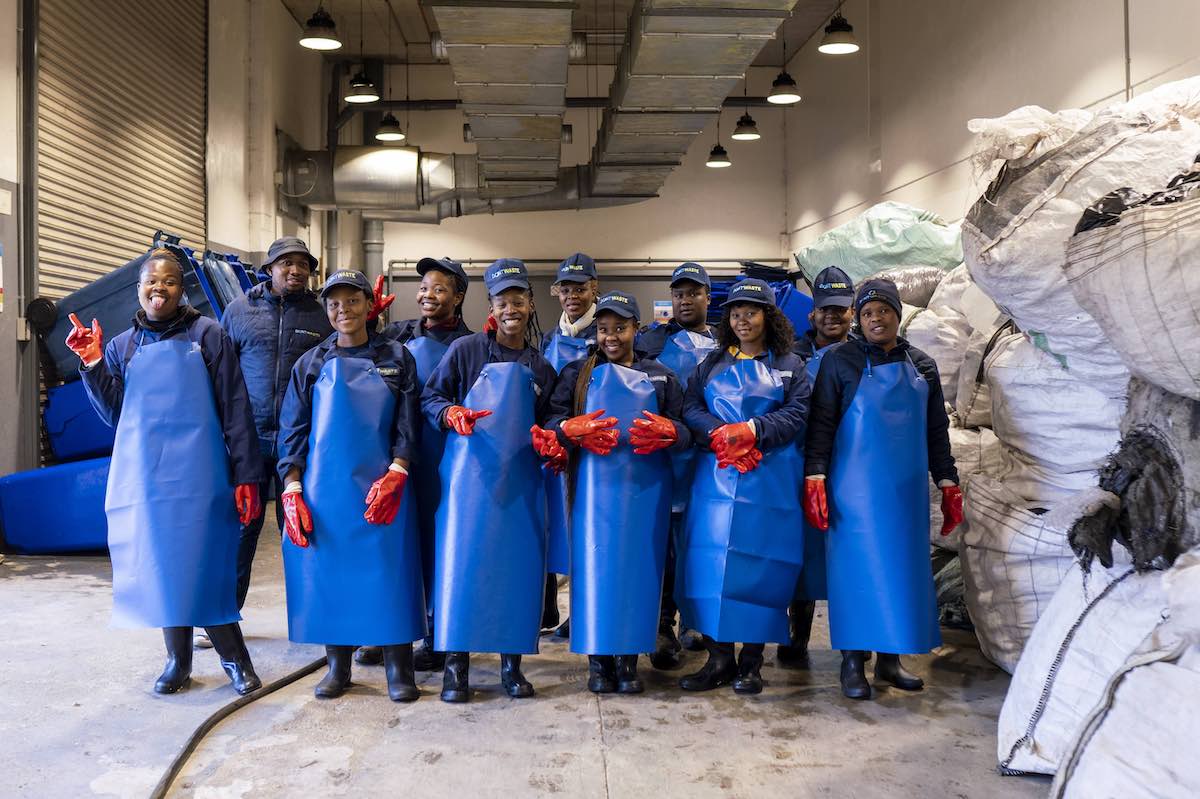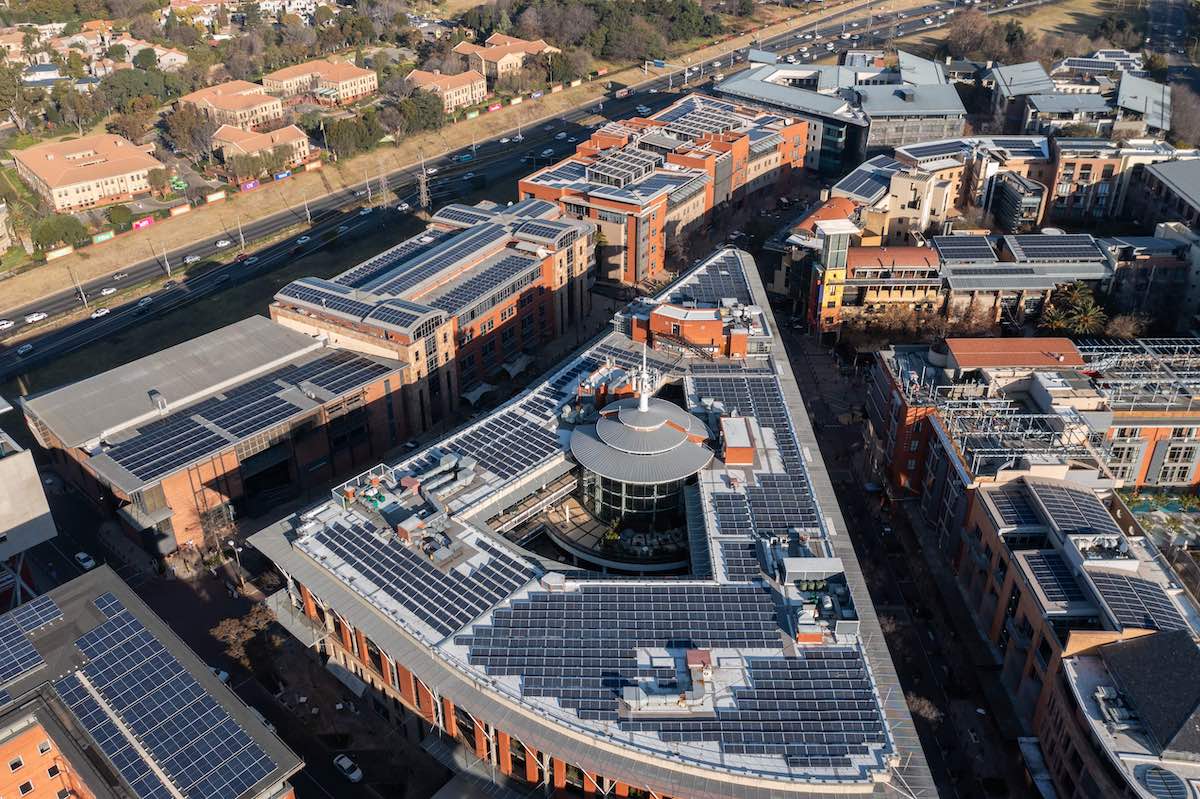Guests at the ‘environmental chic’ event, including a dozen journalists, marvel during a walking tour that shows how far the business district has come to reduce its reliance on the national grid.
Like a proud dad, delighted with what his team has achieved in recent years, Henschel explains Melrose Arch’s journey as he leads the group on a tour that weaves from the rooftop to underground energy and water supply facilities.
There is also a gigantic waste separating plant on the edge of the precinct. Almost 90% of the waste collected from this mini-city, which includes 30 cafés and restaurants as well as shops, hotels, offices and residences, is recycled. Food waste is collected and sent to a facility off-site to be turned into compost.
The plan is not only to reduce reliance on the national grid over time but to reduce its greenhouse gas emissions to net zero by 2050.
The team that separates the 90,000 tonnes a month of waste generated by the precinct, helping to reduce the amount that ends up in landfill. Organic waste is sent for composting. The precinct has ambitions to reduce its greenhouse gas emissions to net zero.
Photo: Supplied
Melrose Arch has leapfrogged from just five years ago when it, figuratively, saw the light and set on a path to renewable energy.
‘We investigated some options but, look, solar was always a low-hanging fruit,’ says Henschel.
Until then, Melrose Arch – like many Gauteng businesses – had switched to diesel generators whenever Eskom switched the lights off. The net result here was higher running costs, and a higher carbon footprint.
Spending on diesel varied depending on the number of hours of loadshedding, but in 2023 the precinct was spending an average of around R1.7-million a month.
‘We still have generators but that’s just too noisy and the diesel is smelly. With extended periods of loadshedding, it became obvious that generators aren’t the answer.
‘When we started to use solar panels, our capacity was just 1 MW,’ Henschel recalls, seguing into the impact of recent reforms in power generation. Those reforms have done much to accelerate the transition to renewables by enabling businesses of all sizes to invest millions to become less-dependent on, or independent of, the national grid.
‘Yes, we have invested a lot in those panels and inverters but in the end we are about people, we’re about the planet,’ reckons the tall Henschel, taking a long view towards net zero.
Plans are afoot to ramp that up the amount of solar power; however, with most of the rooftop space taken, the search is on for a site to house additional panels to increase capacity to 6,5MW.
For businesses here – including an assortment of tenants in the 39,000m² retail space – such moves effortlessly explain the financial upside of sustainability.
For one, electricity tariff increases are about half of what Eskom demands and the carbon footprint is reduced. Meanwhile, a new, green sector is growing steadily in the background.



